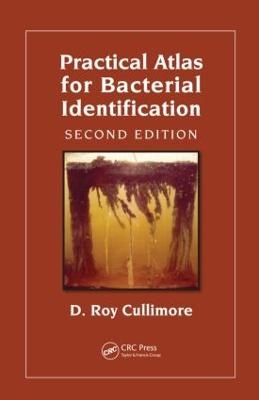
Practical Atlas for Bacterial Identification
Crc Press Inc (Verlag)
978-1-4200-8797-0 (ISBN)
- Titel z.Zt. nicht lieferbar
- Versandkostenfrei innerhalb Deutschlands
- Auch auf Rechnung
- Verfügbarkeit in der Filiale vor Ort prüfen
- Artikel merken
Published nearly ten years ago, the first edition of Practical Atlas for Bacterial Identification broke new ground with the wealth of detail and breadth of information it provided. The second edition is poised to do the same. Differing fundamentally from the first edition, this book begins by introducing the concept of bacteria community intelligence as reflected in corrosion, plugging, and shifts in the quality parameters in the product whether it be water, gas, oil, or even air. It presents a new classification system for bacterial communities based upon their effect and activities, and not their composition.
The book represents a radical departure from the classical reductionist identification of bacteria dominated by genetic and biochemical analyses of separated strains. The author takes a holistic approach based on form, function, and habitat of communities (consorms) of bacteria in real environments. He uses factors related to the oxidation-reduction potential at the site where the consorm is active and the viscosity of the bound water within that consorm to position their community structures within a two-dimensional bacteriological positioning system (BPS) that then allows the functional role to be defined. This book has an overarching ability to define bacterial activities as consorms in a very effective and applied manner useful to an applied audience involved in bacterial challenges.
Organized for ease of use, the book allows readers to start with the symptom, uncover the bacterial activities, and then indentify the communities distinctly enough to allow management and control practices that minimize the damage. The broad spectrum approach, new to this edition, lumps compatible bacteria together into a relatively harmonious consortia that share a common primary purpose. It gives a big picture view of the role of bacteria not as single strains but collectively as communities and uses this information to provide key answe
Roy Cullimore has a PhD in Agricultural Microbiology and went on to develop a number of patents, edited a series of books for CRC Press on Sustainable Water Wells, and has published in the area of applied microbial ecology. Cullimore was involved in deep-ocean research and presently has seven experiments on the RMS Titanic together with experiments on other ship wrecks to determine the rates of decay.
Bacterial Communities by Location and Function. Common Bacteriologically Initiated Events. Bacteria Are Everywhere. Preliminary Differentiation of Alpha Bacterial Consorms. Environmental Dynamics of Bacterial Consorms. Bacterial Consormial Challenges. Detailed Identification of Bacterial Consorms. Biochemical Methods for Identification of Consorms. Identifying Bacterial Consorms Using BART. Introduction to Grid-Formatted Bacteriological Atlas. Defining Bacterial Consorms in Gridded Atlas Format. Natural Bacteriological Consorms. Suggestions for Further Reading.
Appendix A: Alpha Two Traditional Atlas Concept.
| Erscheint lt. Verlag | 1.4.2010 |
|---|---|
| Verlagsort | Bosa Roca |
| Sprache | englisch |
| Maße | 152 x 229 mm |
| Gewicht | 770 g |
| Themenwelt | Naturwissenschaften ► Biologie ► Genetik / Molekularbiologie |
| Naturwissenschaften ► Biologie ► Mikrobiologie / Immunologie | |
| ISBN-10 | 1-4200-8797-5 / 1420087975 |
| ISBN-13 | 978-1-4200-8797-0 / 9781420087970 |
| Zustand | Neuware |
| Informationen gemäß Produktsicherheitsverordnung (GPSR) | |
| Haben Sie eine Frage zum Produkt? |
aus dem Bereich


